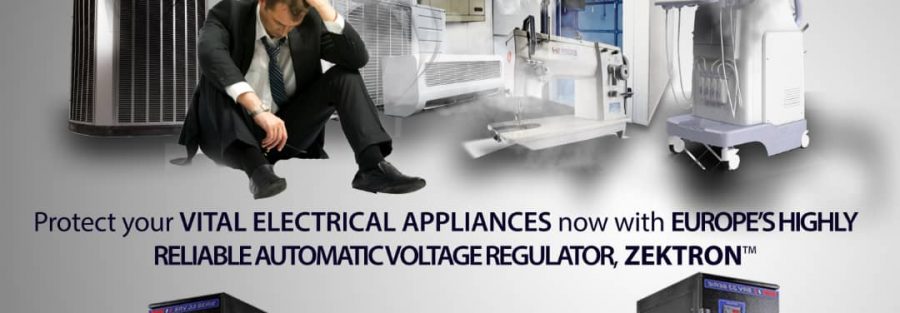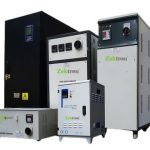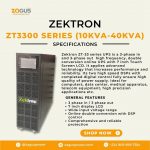It is vital to choose the correct voltage stabilizer for your needs. The nature of your application, its power consumption range and the level of voltage changes encountered in your area are all crucial factors to consider. You willl need to know the rating of the equipment that needs to be protected, which is usually expressed in kVA, kW or Amps. You also need to know the voltage and frequency of the nominal line.
Here are a few easy guidelines for choosing a stabilizer:
● Check the device’s voltage, current, and power rating. It’s listed on a specification sticker near the power outlet, or you may look it up in the user handbook. The conventional service voltage will be 220 VAC at 50 Hz.
● Multiply 220 x Max rated Current of all the equipment that will be connected to the stabilizer to get the maximum power. To arrive at a stabilizer rating, add a 20-25 percent safety buffer. You can preserve a buffer for later if you plan to add more devices.
● You should also consider the surge current that occurs when the gadget is turned on. Assume a power factor of 0.8 (W=V*A*pf) if the Voltage Stabilizer is similarly rated in watts.
● The most crucial aspect is to understand the nature of the load attached to the stabilizer. To begin, make a list of all the appliances that will be connected to a stabilizer and their power (in Watts). The entire amount of power consumed (in Watts) equals the load on the stabilizer in watts.
● However, most stabilizer sizes are measured in VA (Volt Ampere) or kVA (Kilovolt Ampere) (kilo Volt Ampere which is equal to 1000 Volt Ampere).
Although you will need to do some measurements to acquire the exact VA (or Volt Ampere) from Watts (W), you can use a rough approximation by increasing the Watts value by 20% to get the approximate VA size you need.
● For example, if the total number of Watts linked to your stabilizer is 1000, you can choose a 1200 VA or 1.2 kVA stabilizer. (Please note that 20% is appropriate for home systems and may not function in industries if the power factor is low.)
● A stabilizer often comes in a variety of working ranges (working range refers to the voltage range in which the stabilizer operates/stabilizes the input utility voltage and produces a desired output voltage). It is critical to select a stabilizer that matches the voltage fluctuations in your area.
● Make a rough estimate of the frequency of power fluctuations in your area. (For example, severely low/high voltage zones, intermediate-high/low voltage zones, and so on.) You must select a functioning range for your stabilizers that will meet the demands of your environment. If your location encounters strong low/high voltage fluctuations, for example, you may need to buy a stabilizer with a wide functioning range.
What are the most important things to look for in a Voltage Stabilizer?
1. Installation
Because a voltage stabilizer works with electricity, it is always possible for it to get wet or damaged if it is left on the ground or in a dangerous location. This is why most stabilizers may be wall-mounted or positioned at a higher elevation to protect not only the device from damage but also your family, particularly young children, from the risk of electric shock.
2. Indicators
The voltage that has been regulated in order to give electricity to the device is displayed by indicators. LED indicators are also available on newer models.
3. Time-Delay Systems
When a short-term power outage happens, this function allows for a time gap so that the inbuilt compressor (in the case of a refrigerator or air conditioner, for example) has enough time to balance the current flow.
4. It has been digitized
Many of the most recent models have been computerized, making the operation of a stabilizer more accurate and trustworthy. What’s intriguing about these newer versions is that they are not just digital, but they also adapt to a wide range of devices. So all you have to do to get it to function is switch the stabilizer from one device to another. If generators are added, the majority of them will link and adapt to them.
5. Protection Against Overload
In the event of a short circuit or any other type of burn-out due to overload, the overload protection feature fully disables the stabilizer output.



